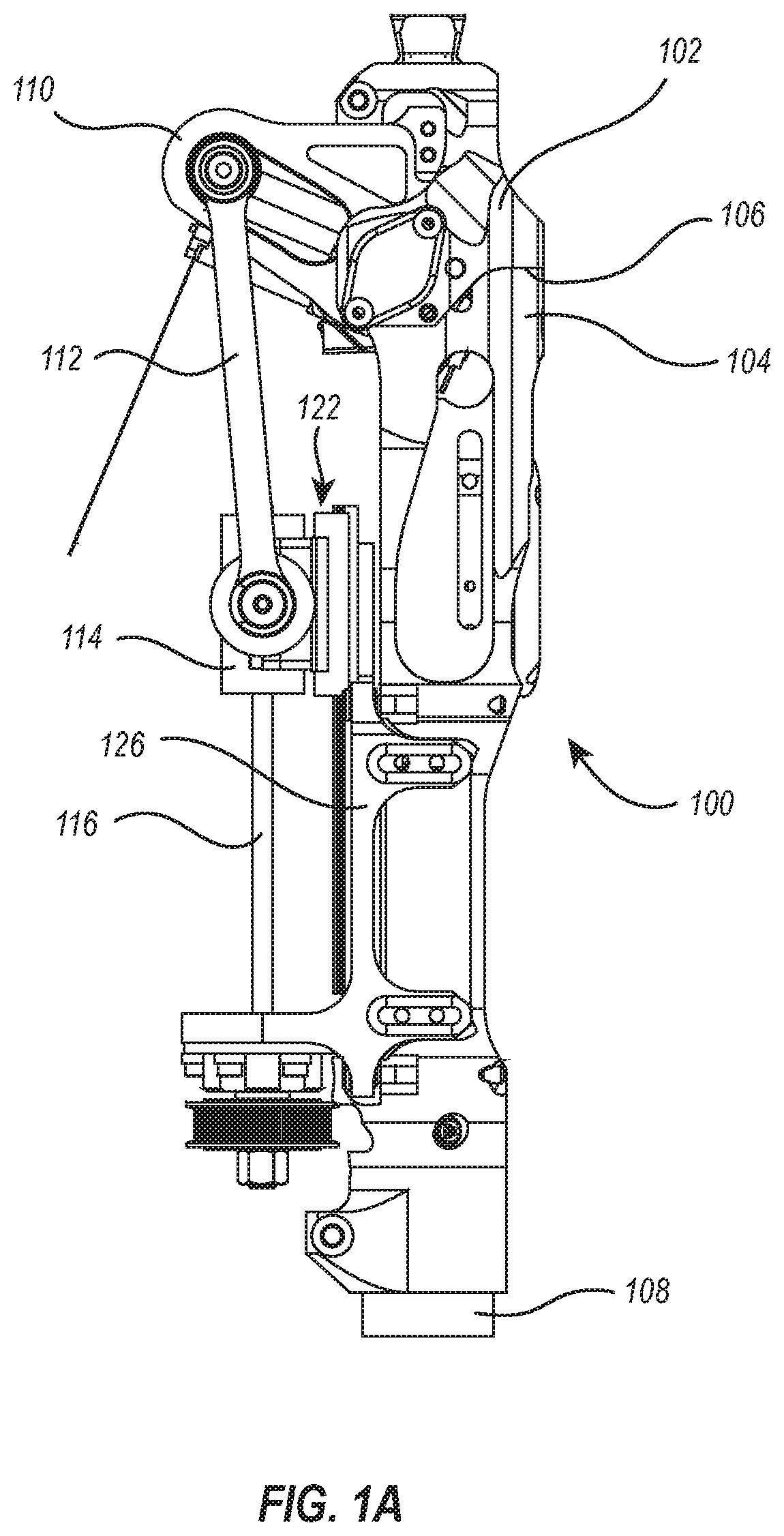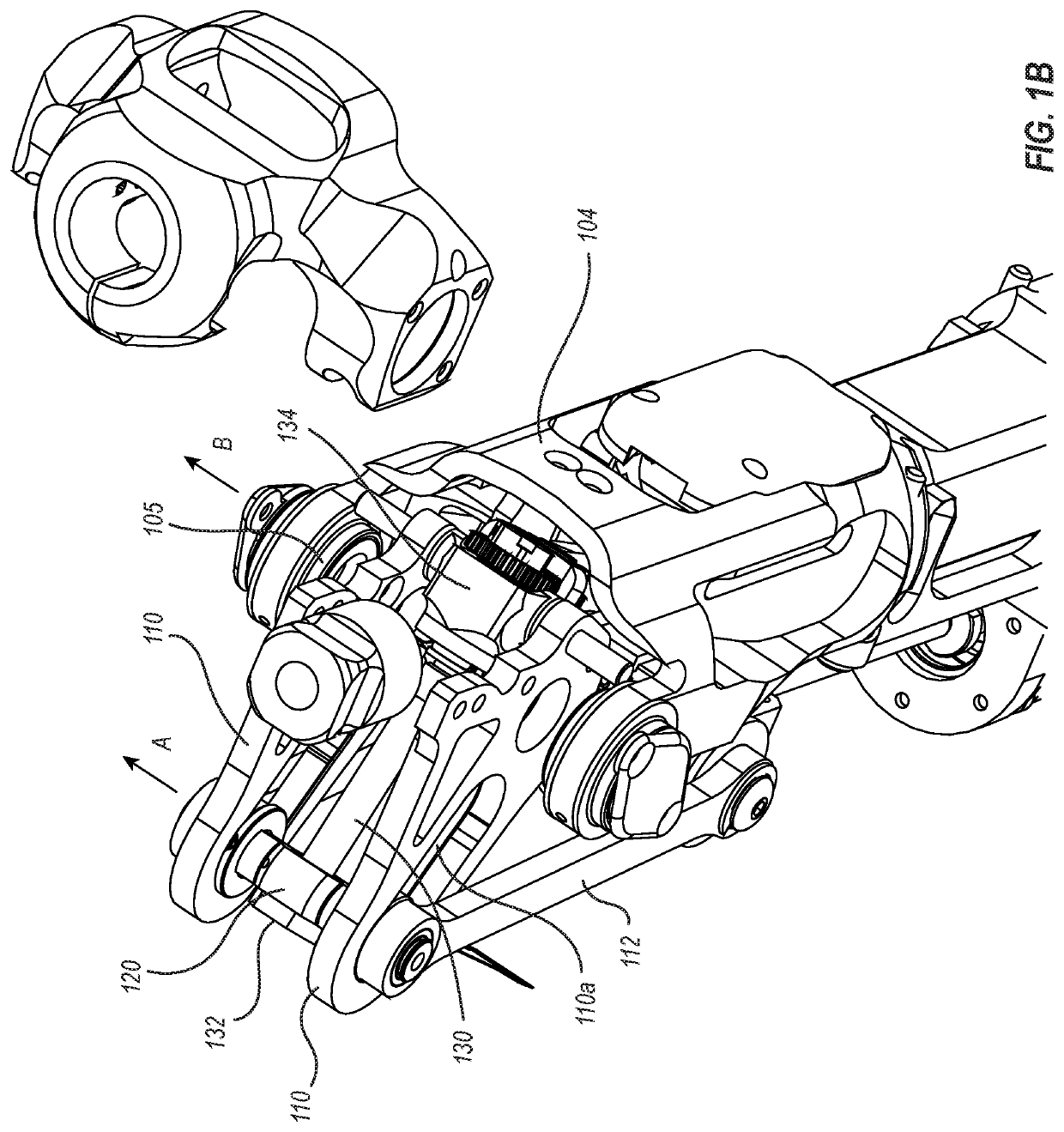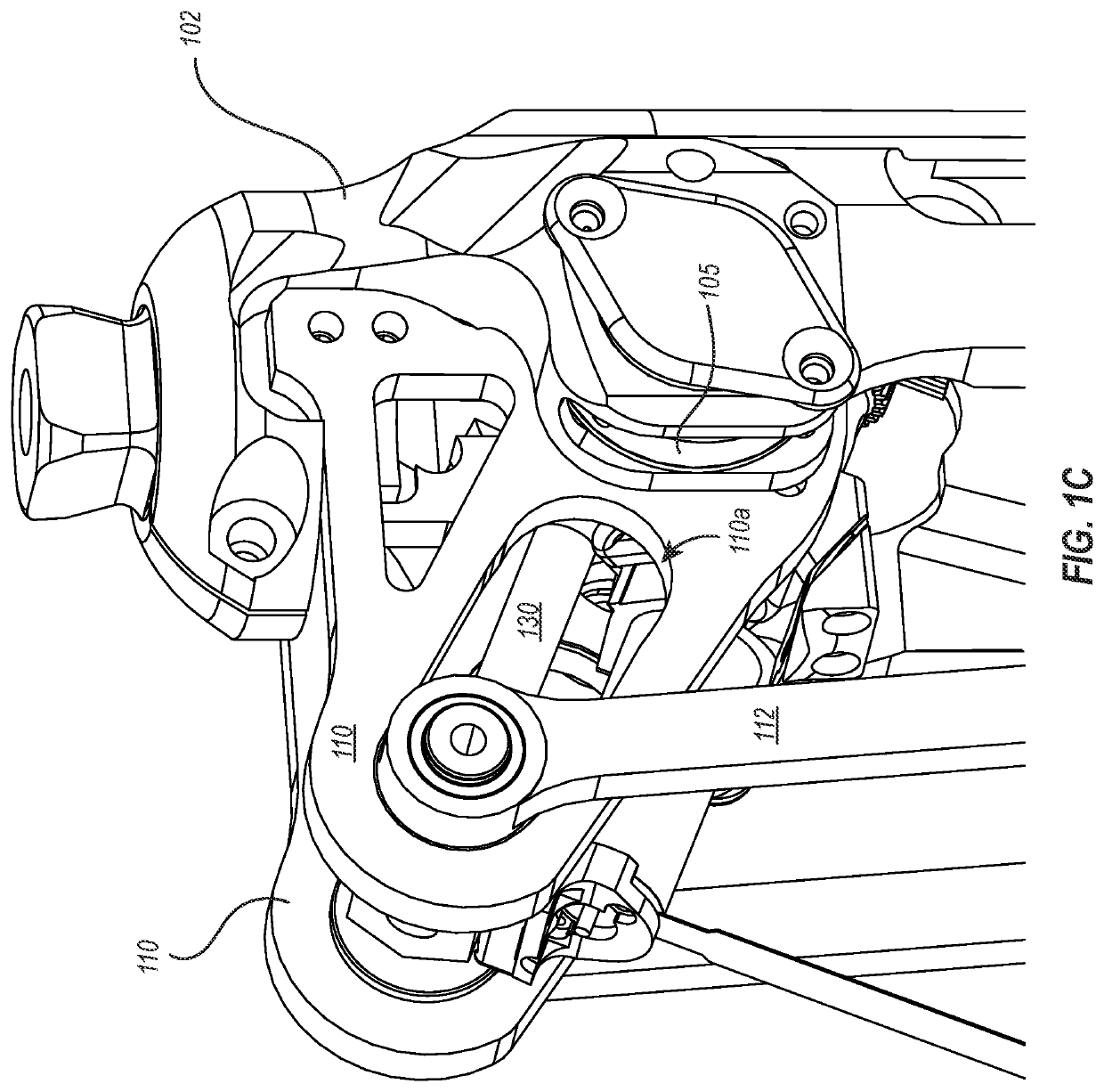Variable transmission for assistive prosthesis device
a technology of assistive prosthesis and transmission knee, which is applied in the field of assistive devices, can solve the problems of relatively low transmission ratio of variable transmission knee for tasks that require relatively high speed and relatively low torque, and achieve the effects of low speed, high torque, and relatively high transmission ratio of variable transmission kn
- Summary
- Abstract
- Description
- Claims
- Application Information
AI Technical Summary
Benefits of technology
Problems solved by technology
Method used
Image
Examples
example actuation mechanisms
[0040]As shown in FIGS. 1A through 1C, an assistive device (here, an assistive prosthesis 100) may include a head portion 102 and foot portion 104 that are rotatably connected to each other by way of a one or more shafts 105. The head portion 102, foot portion 104, and shafts 105 collectively define a rotatable joint 106, such as a knee joint for example, which is able to bend at the line indicated by reference 106 so that the head portion 102 is able to rotate toward, and away from, the foot portion 104. In some embodiments, the range of rotation of the head portion 102 relative to the foot portion is about 90 degrees, but may be more, or less than, 90 degrees in other embodiments. In the example of FIGS. 1A through 1C, the head portion 102 has been fully rotated into contact with the foot portion 104. Where the rotatable joint 106 comprises a knee joint, the illustrated configuration illustrates a knee joint in an extended / unbent state.
[0041]With continued reference to FIGS. 1A th...
example control
Systems
[0056]FIG. 2A schematically illustrates an example control system 600 operable to determine an ambulation mode and automatically adjust the actively variable transmission system accordingly. In the system, a high-level controller 602 includes a plurality of ambulation mode profiles 604, including, in this example, walking, stair ascent, and stair descent. Each ambulation mode profile 604 includes a set of movement states: Lift, Stand, Stance, and Swing. Each ambulation mode profile 604 may include its own particular finite-state machine, and each movement state may include its own particular control algorithm. These are sent to a mid-level controller 608. Using the state-specific algorithms, the mid-level controller 608 generates a desired joint torque 609 (Tdes), which is then sent to a low-level controller 610. The low-level controller 610 operates to translate the desired joint torque 609 into functional motor commands 611 (Tmotor) (e.g., current, voltage, and / or speed com...
example 1
Comparative AVT Crank Lengths
[0100]The kinematics of a lightweight assistive knee can be modelled as an offset slider-crank mechanism with an added prismatic joint along the crank. The transmission ratio thus depends on the crank length. A short crank setting would result in a low transmission ratio. Thus, it would be appropriate for activities that require high speed and low torque. On the other hand, a large crank setting would result in a high transmission ratio, which will be used for tasks that require high speed and low torque.
[0101]An analysis of healthy human biomechanics is helpful in selecting appropriate transmission ratios for different ambulation tasks, which will guide the selection of different crank lengths. The torque and speed requirements for the knee joint were extracted from healthy biomechanics using an available dataset. Generally, walking requires 66% lower torque and 37% higher speed than ambulation on stairs. Within stair ambulation, ascent and descent are ...
PUM
 Login to View More
Login to View More Abstract
Description
Claims
Application Information
 Login to View More
Login to View More - R&D
- Intellectual Property
- Life Sciences
- Materials
- Tech Scout
- Unparalleled Data Quality
- Higher Quality Content
- 60% Fewer Hallucinations
Browse by: Latest US Patents, China's latest patents, Technical Efficacy Thesaurus, Application Domain, Technology Topic, Popular Technical Reports.
© 2025 PatSnap. All rights reserved.Legal|Privacy policy|Modern Slavery Act Transparency Statement|Sitemap|About US| Contact US: help@patsnap.com



